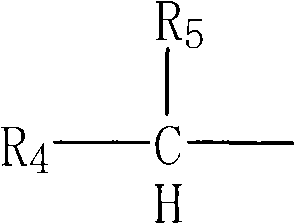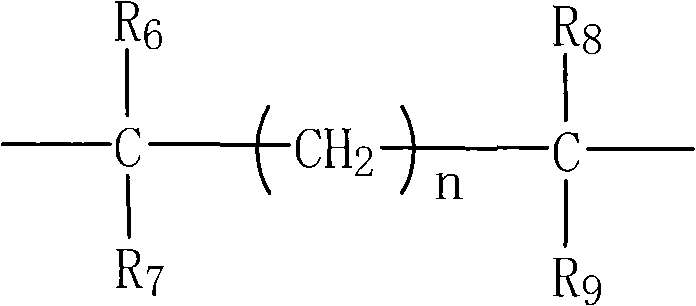Method for producing polymerized toner, polymerized toner, method for producing binder resin for toner and binder resin for toner
A technology of binder resin and toner, applied in the fields of production of polymerized toner, polymerized toner, production of binder resin for toner and binder resin for toner, can solve the problem of undeveloped It solves the problems of the production method of polymerizable monomer and decomposition product residue retention, the deterioration of developability, and the widening of particle size range, so as to achieve the effect of excellent triboelectric charging stability.
- Summary
- Abstract
- Description
- Claims
- Application Information
AI Technical Summary
Problems solved by technology
Method used
Image
Examples
Embodiment 1
[0144] Preparation of pigment dispersion paste:
[0145] Styrene: 78.0 parts by mass
[0146] Carbon black: 7.0 parts by mass
[0147] The above-mentioned raw materials were thoroughly premixed in a container while maintaining the mixture thus obtained at a temperature of 20° C. or lower, and the mixture was uniformly dispersed and mixed for about 4 hours using an attritor (manufactured by Mitsui Miike Kakoki Co., Ltd.), thereby preparing Pigment dispersion paste.
[0148] Prepare toner particles:
[0149] Add 390 parts by mass of 0.1mol / liter Na to 1150 parts by mass of ion-exchanged water 3 PO 4 Aqueous solution, heat the resulting mixture with stirring to a temperature of 60°C, and then add 58 parts by mass of 1.0mol / liter CaCl 2 Aqueous solution was added to the mixture, and the mixture was further continuously stirred to prepare the 3 (PO 4 ) 2 Aqueous medium of dispersion stabilizer.
[0150] On the other hand, the following raw materials were added to the pigme...
Embodiment 2
[0164] In addition to using 5.9 parts by mass of 2,5-bis(ethylbutyryl peroxy)-2,5-dimethylhexane as a polymerization initiator instead of 5.0 parts by mass of 2,5-bis(iso butyrylperoxy)-2,5-dimethylhexane, and the temperature at the time of polymerization was raised to 89°C instead of 84°C in Example 1, and the tint was prepared in the same manner as in Example 1 agent.
Embodiment 3
[0209] Preparation of toner particles:
[0210] In 300 parts by mass of ion-exchanged water, 0.2 parts by mass of polyvinyl alcohol was dissolved to prepare an aqueous medium. On the other hand, 78.0 parts by mass of styrene, 22.0 parts by mass of n-butyl acrylate, and 2.5 parts by mass of 2,5-bis(isobutyryl peroxy)-2 used as a polymerization initiator in Example 1 were mixed together, 5-dimethylhexane, thereby preparing the monomer composition. The monomer composition was put into an aqueous medium, and stirred for 15 minutes with a TK homomixer (manufactured by Tokushu Kika Kogyo Co., Ltd.), thereby preparing a suspension dispersion.
[0211] In a nitrogen atmosphere, the temperature of the suspension dispersion was raised to 90° C. to start polymerization, and further maintained at this temperature for 24 hours to complete the polymerization reaction. When the reaction was completed, the suspension dispersion was cooled, filtered, washed with water and dried to yield Bind...
PUM
 Login to View More
Login to View More Abstract
Description
Claims
Application Information
 Login to View More
Login to View More - Generate Ideas
- Intellectual Property
- Life Sciences
- Materials
- Tech Scout
- Unparalleled Data Quality
- Higher Quality Content
- 60% Fewer Hallucinations
Browse by: Latest US Patents, China's latest patents, Technical Efficacy Thesaurus, Application Domain, Technology Topic, Popular Technical Reports.
© 2025 PatSnap. All rights reserved.Legal|Privacy policy|Modern Slavery Act Transparency Statement|Sitemap|About US| Contact US: help@patsnap.com



